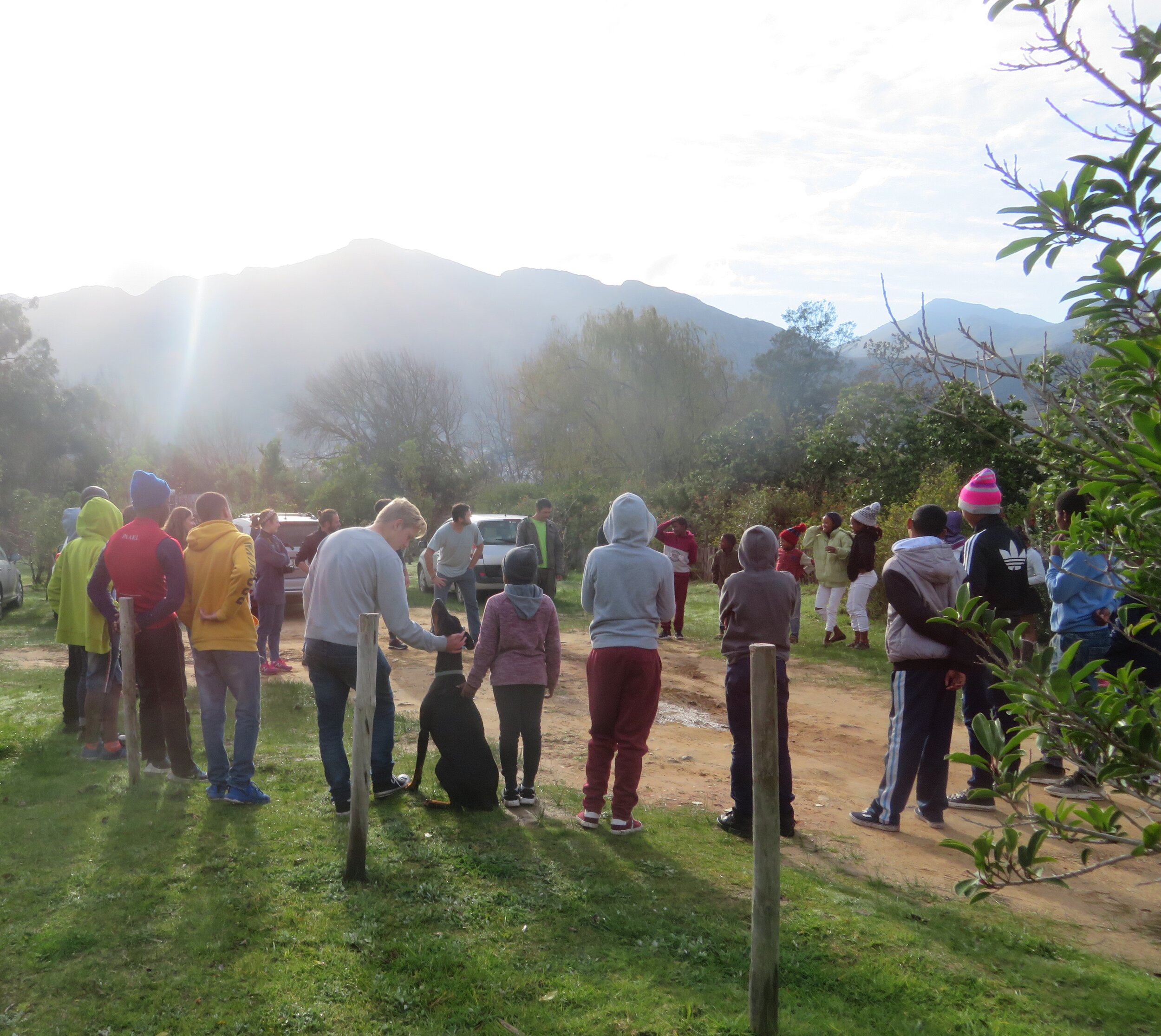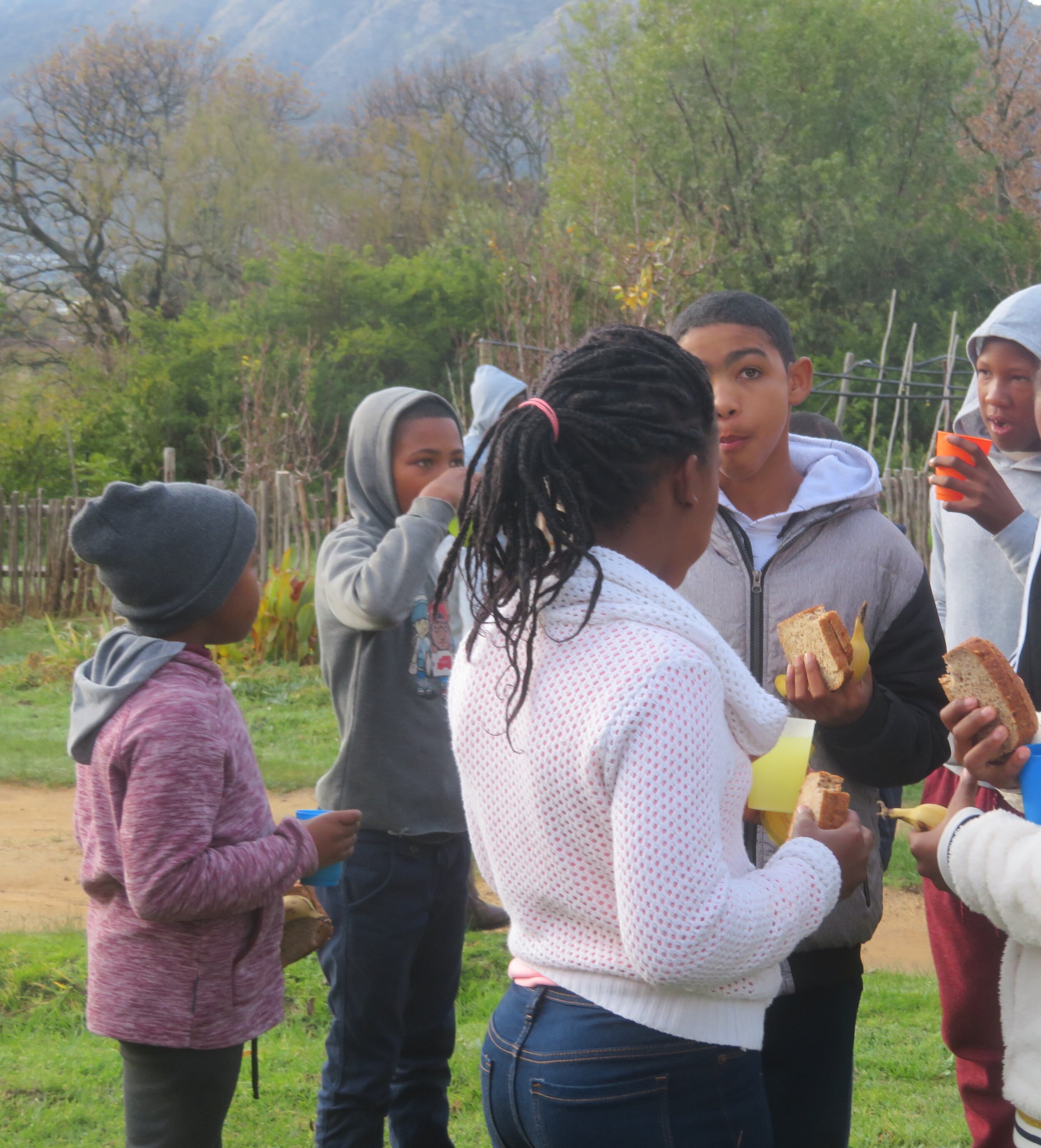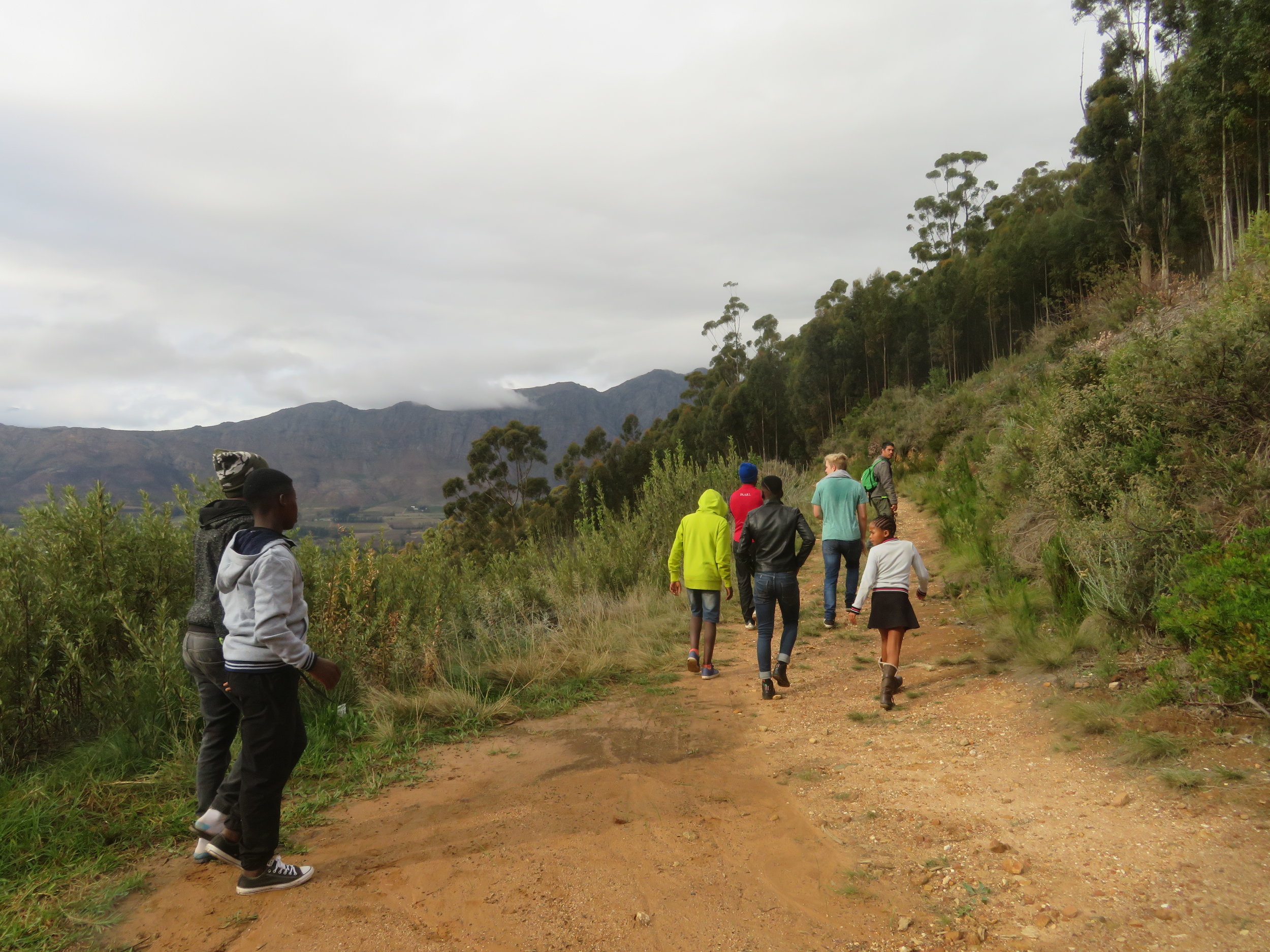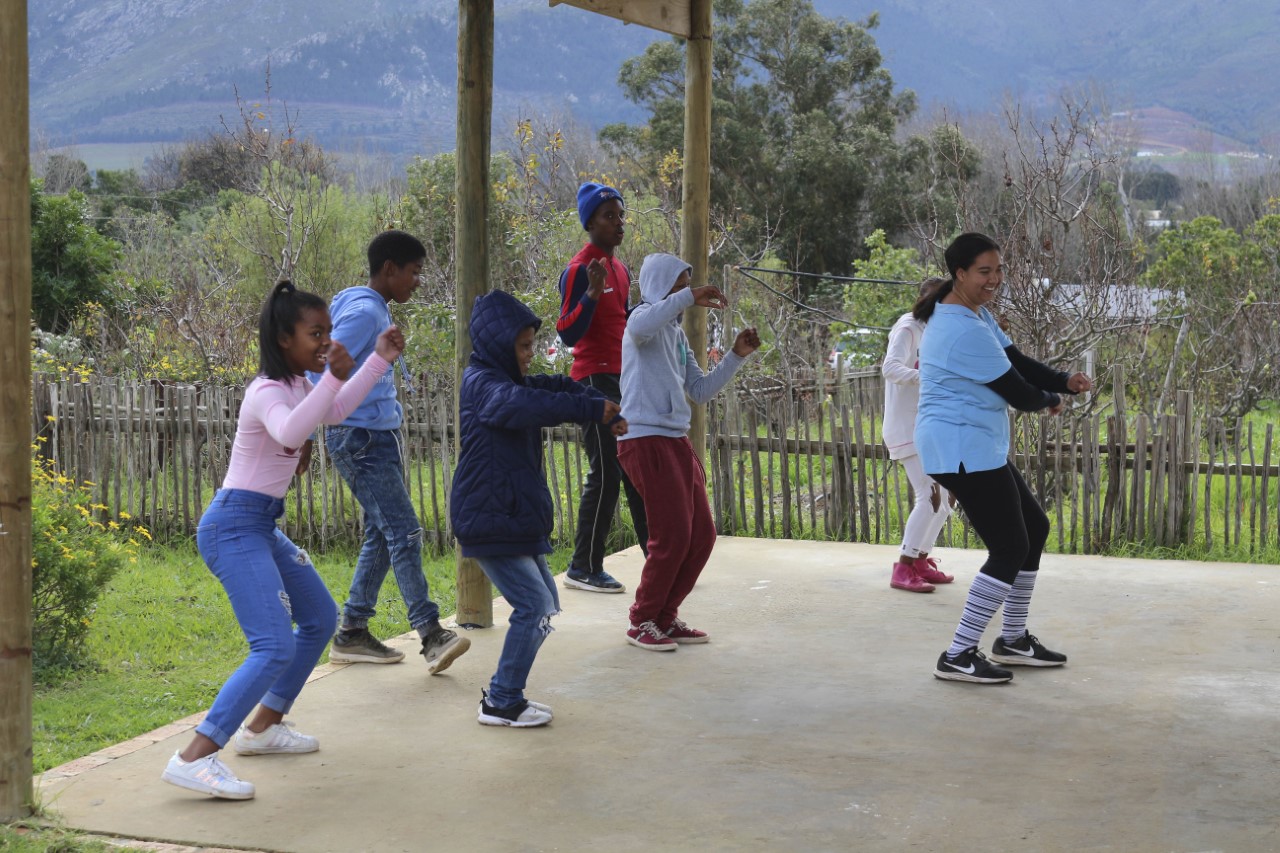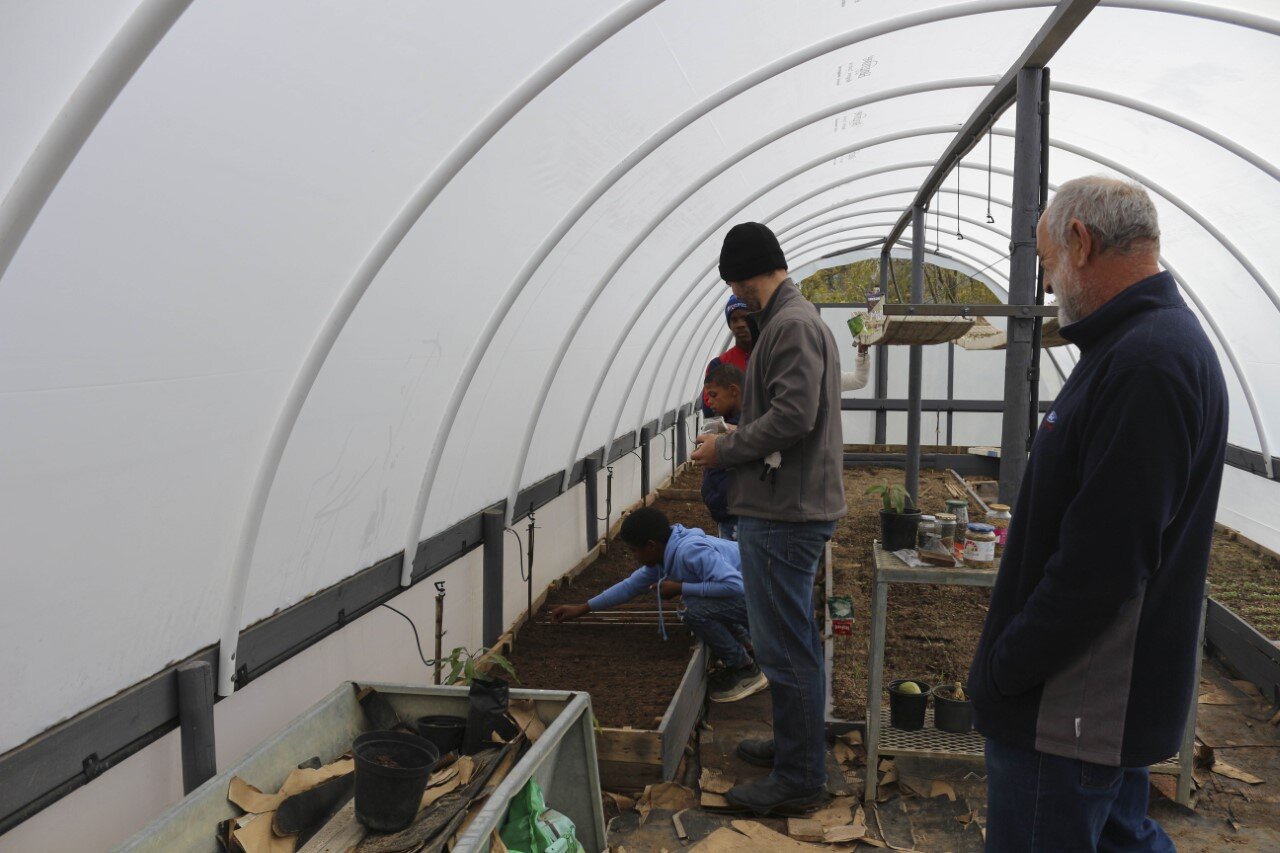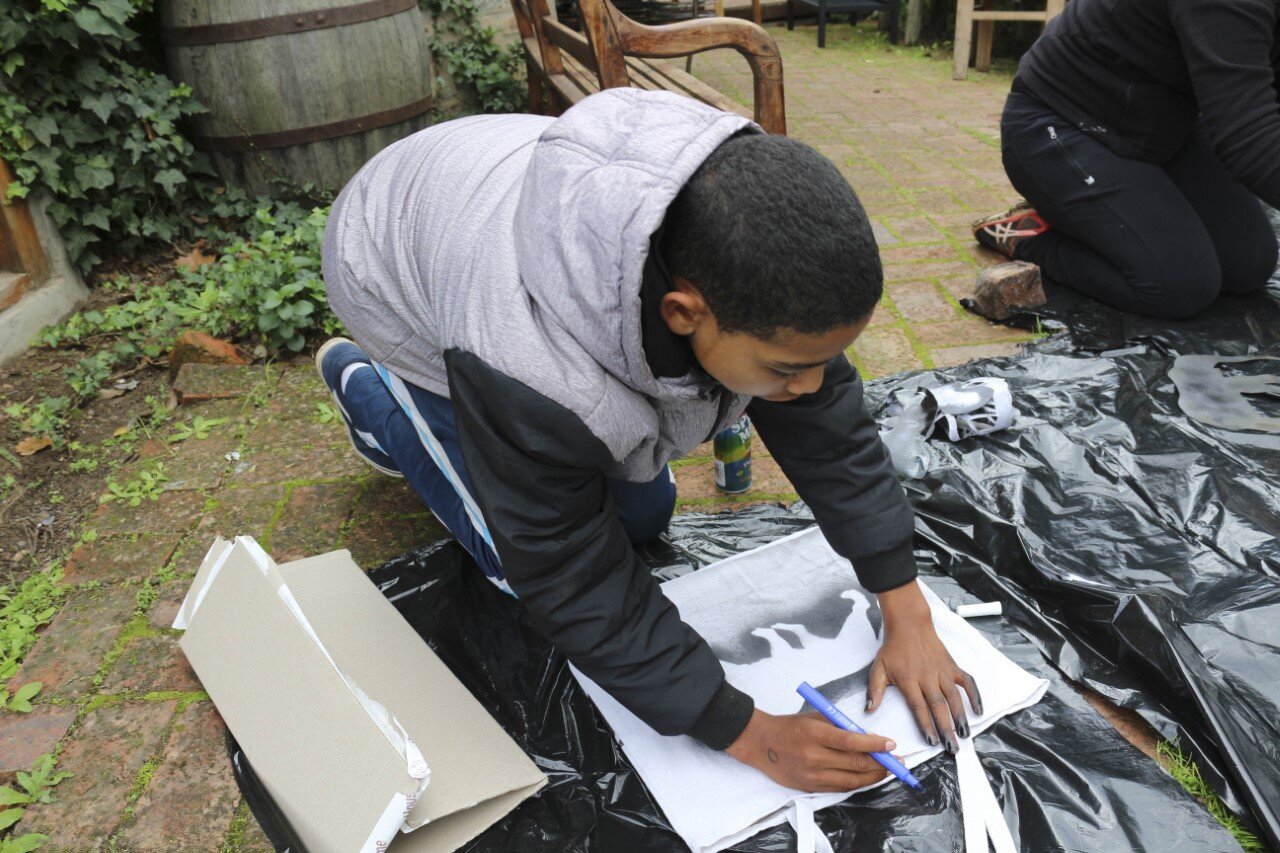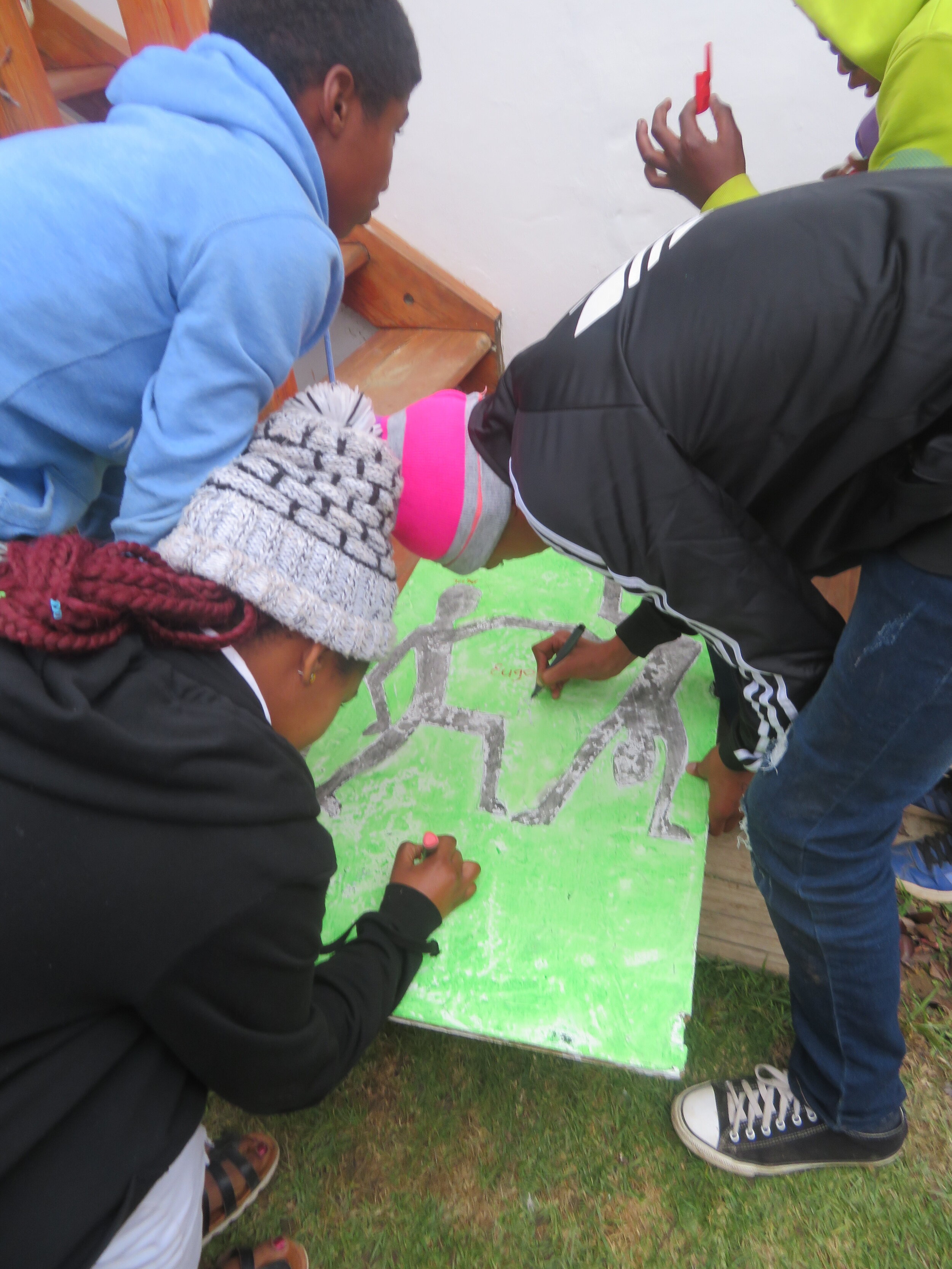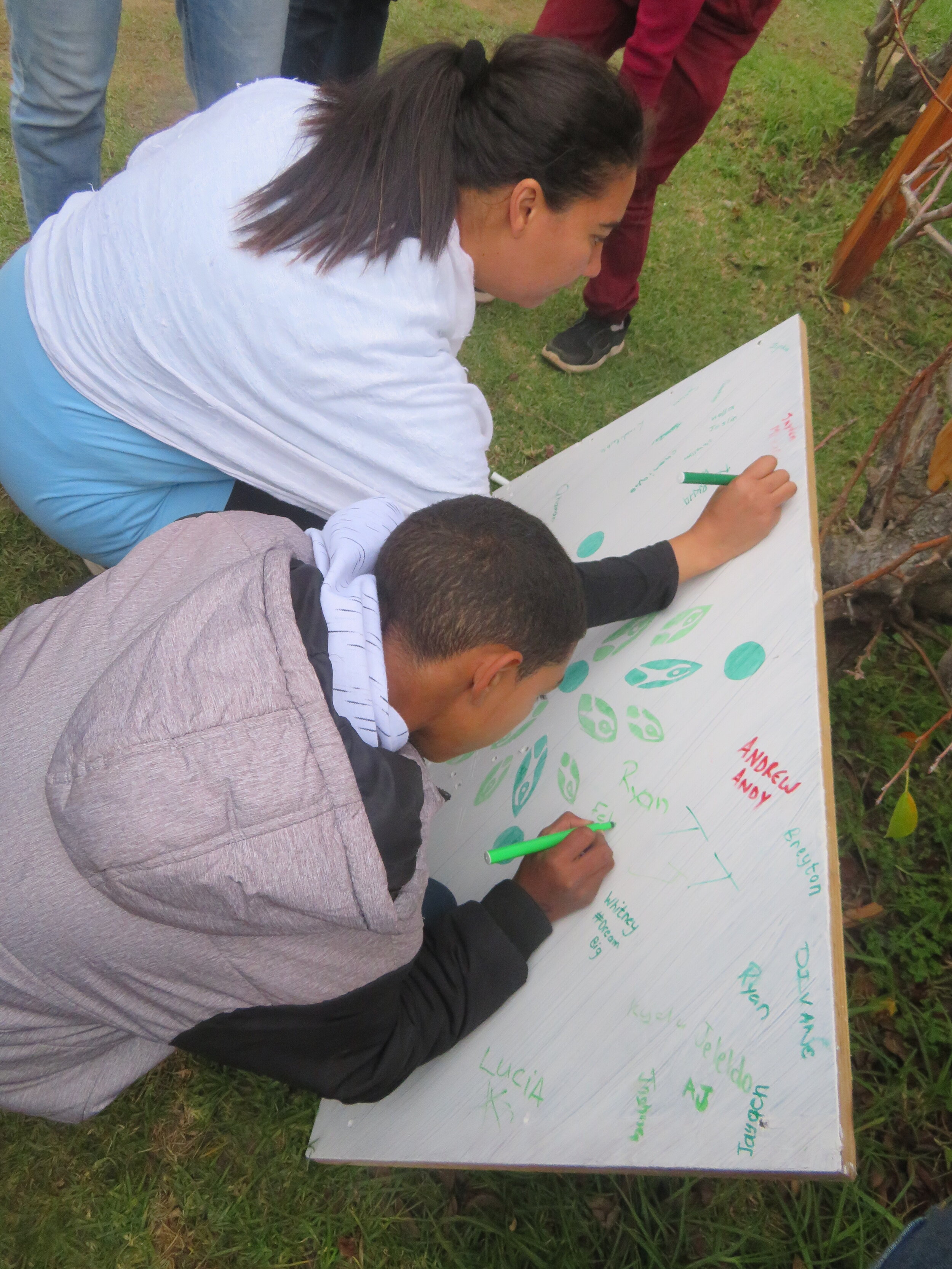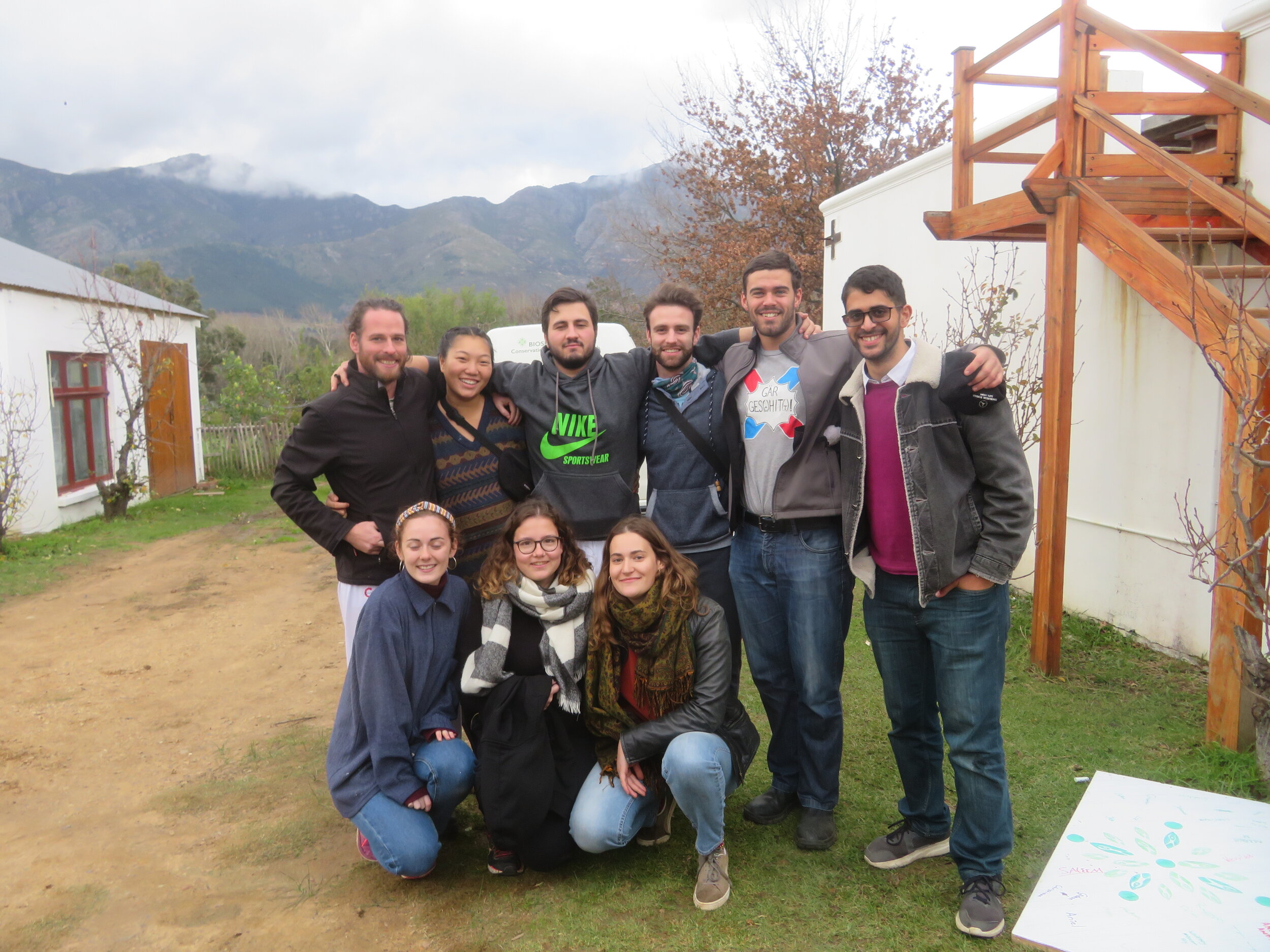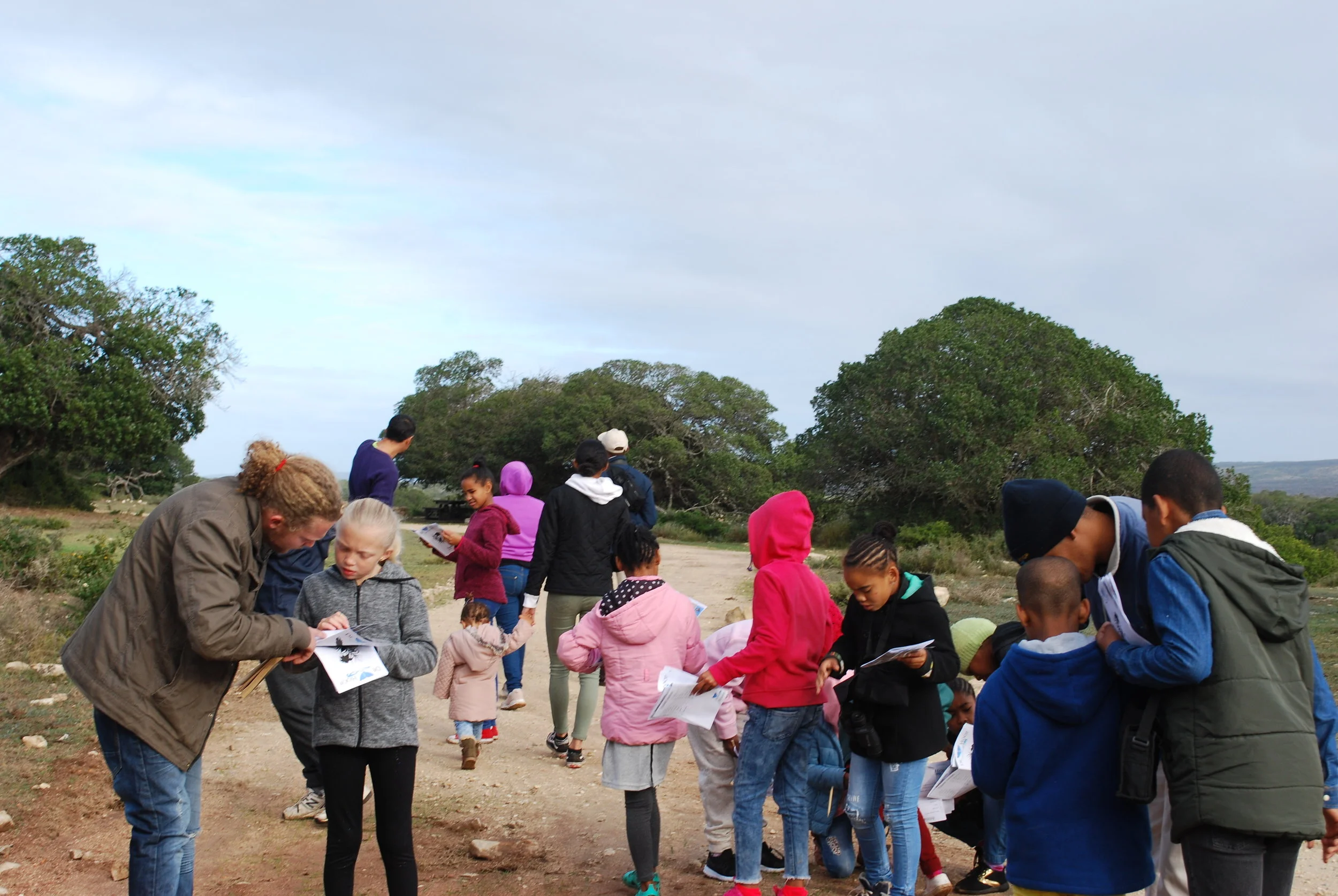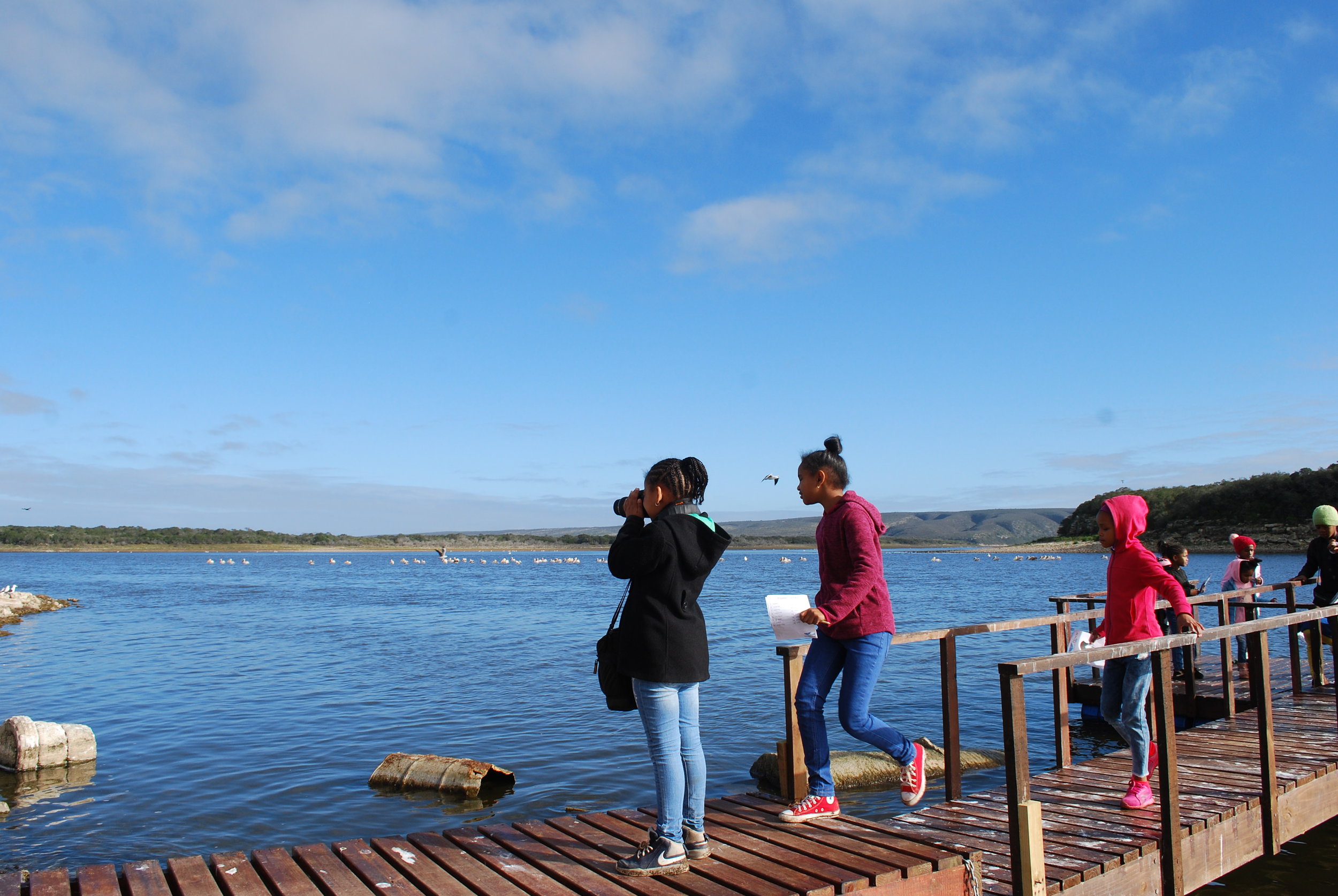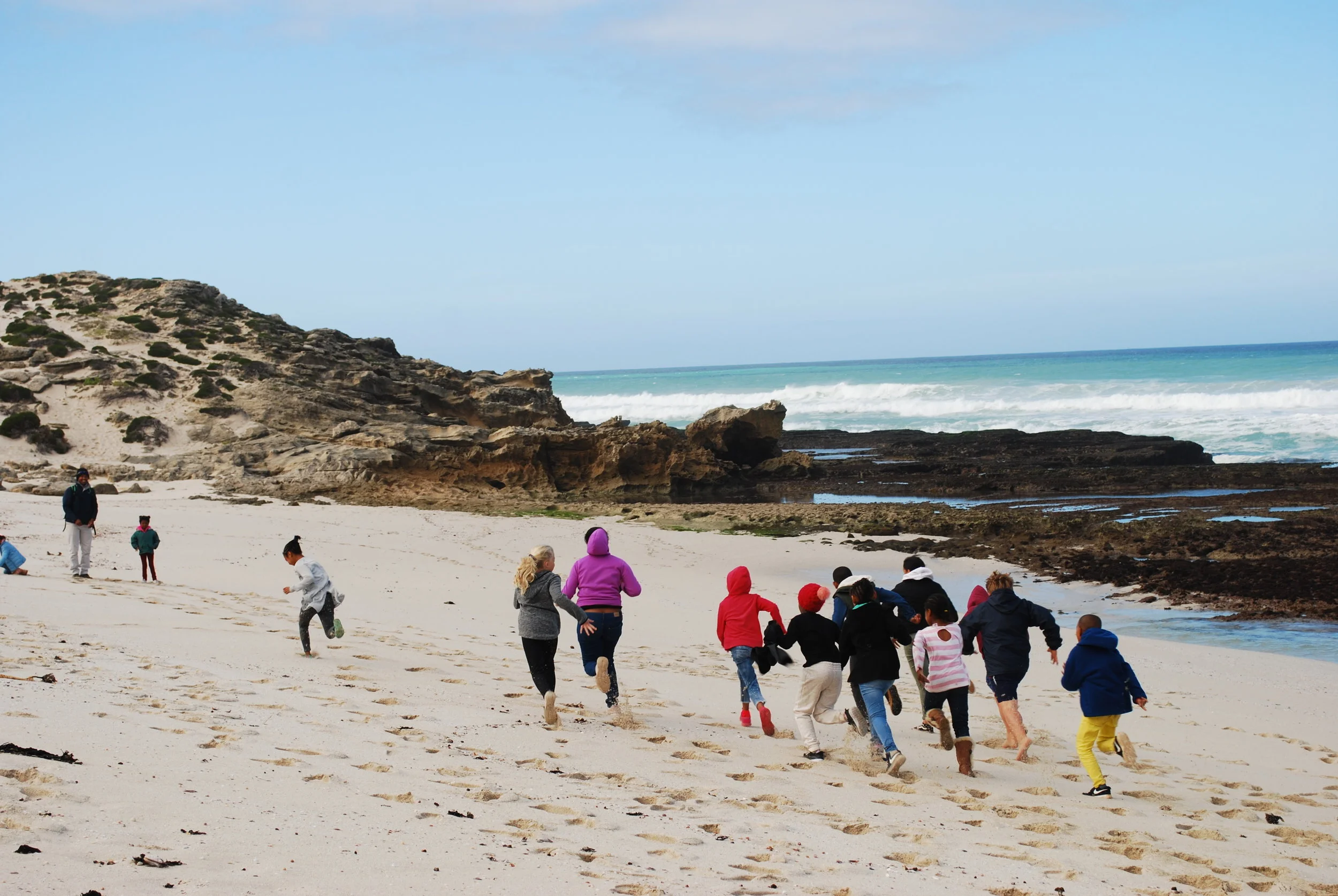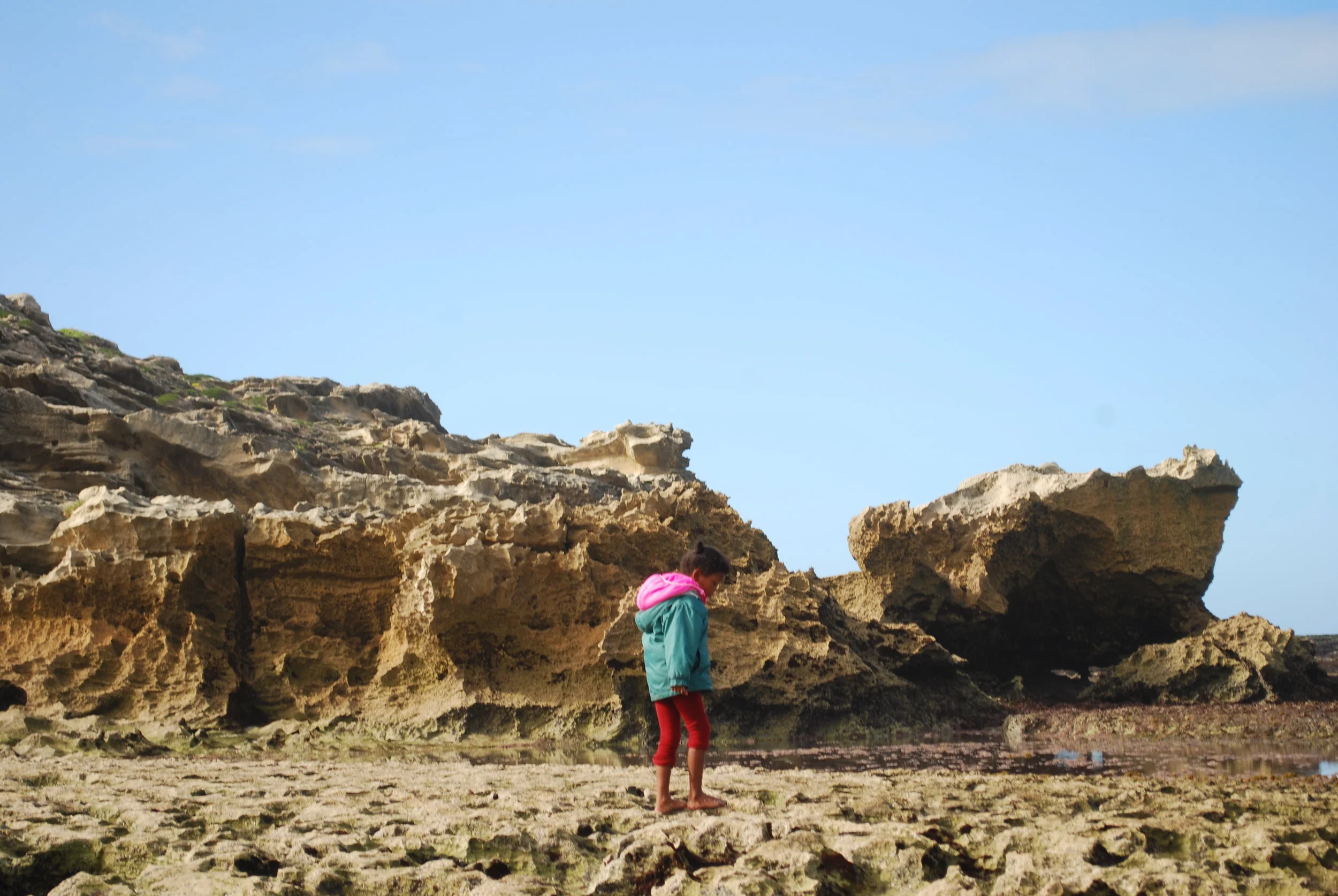Cape Winelands Biosphere Reserve has co-facilitated and collaborated with organizations to arrange camps for youth from many different areas and backgrounds. Below is the recollection by a CWBR guide of a memorable camp. It was the first of its kind at De Hoop Collections, as part of a local outreach programme instigated by the De Hoop Collection guides, who had themselves already taken part in FGASA and Life Skill courses.
De Hoop Community Outreach Camp June 2019
Recognising the CWBR bus and trailer approaching, the young girl increased her pace. She was still on her way to school with her bags for the weekend camp. As we pulled the bus into Nuwerus Napier Day Care Centre, her speed increased to meet us, as did her excitement and the size of the smile on her face.
To make a weekend camp possible, CWBR provided transport and equipment to De Hoop Collections, within De Hoop Nature Reserve. The camp was for 15 young people (aged between 2 and 14) and 2 teachers from the Day Care Centre. The principle of Nuwerus Napier Day Care Centre is herself a graduate from the first CWBR FGASA & Life Skills Guiding course. Before attending the course, she worked at the Day Care Centre as an assistant, and later at De Hoop Nature Reserve as a guide. However, feeling her deep conviction to make a difference in the lives of vulnerable young people in her community was not being fulfilled, she returned home to Napier and to the Day Care Centre.
Arriving at De Hoop, we were greeted with a magnificent view of the ocean, bright pink Protea repens and a wonderful welcome from the resident guides. They were anxious to get to know their young clients and prepare for the first camp activities. Without hesitation, the young people leapt on to the game-drive Landcruiser to go to the campsite. The sun would be setting soon. There were tents to erect and meals to cook.
That evening, the Team (Centre teachers, De Hoop guides and CWBR representatives) built a big fire in the middle of the boma and laid out a long table to seat everyone. They made a potje, and with an evening of games and great laughter, the young people were introduced to De Hoop, the Team and the weekend ahead.
Next morning the group rose early brimming with excitement to explore their surrounds. First, they ate a healthy breakfast at the long table and cleaned up to leave nothing for the baboons. Whilst CWBR made and cooked burgers for lunch, the group headed off for their first adventure – a walk around the inland lagoon.
The walk gave an opportunity to watch hundreds of Dung Beetle grubs. There were sightings of giant Ostrich and many Bontebok. We watched great Pelicans and many other coastal birds diving for fish close to us in the lagoon. In the distance, clearly visible with binoculars, Flamingos displayed their pink beauty. The wonderful sights at the lagoon kept the group fascinated until it was time to head off for the rocky shore tour.
Being transported from inland adventure to seashore by game-drive vehicle - the group was thrilled! The principal guide for the seashore walk is a seasoned professional at De Hoop and has become a hero and role model for the young people of Napier. He and his colleagues explained some of the rich and diverse forms of life on the rocky shores. They discovered many creatures of all colours and shapes previously unknown to the group. A lucky find was an Octopus! Along the walk the group collected rubbish washed up on the beach and learned what happens when we pollute.
When we reached the sandy beaches, the urge to swim overcame inhibitions and the children splashed in the shoreline of the ocean. Returning to camp, the group warmed up with cups of tea.
With energy levels revived, the group put together ingredients for that night’s meal and headed, with their guides, for the protection of the boma. As the food was cooking, the group was introduced to the night skies – an experience enhanced by the arrival of marshmallows for the fire.
Packing and a hearty breakfast feast followed an early rise and shower next morning. The group set off for another short adventure, which enabled the remaining guides and CWBR staff to discuss our work together, share experiences and learn from each other. It was a great opportunity to show off and test individual skills and knowledge.
Saying farewell to our hosts and colleagues was hard. Nobody wanted the weekend to end. With great joy, appreciation and fond memories, we waved goodbye to De Hoop and headed back to Napier.
Back at the Centre, we said our goodbyes to the principle and her colleagues.
Many thanks indeed to all who made the weekend possible, especially the wonderful people of Nuwerus Napier Dagsorg.


